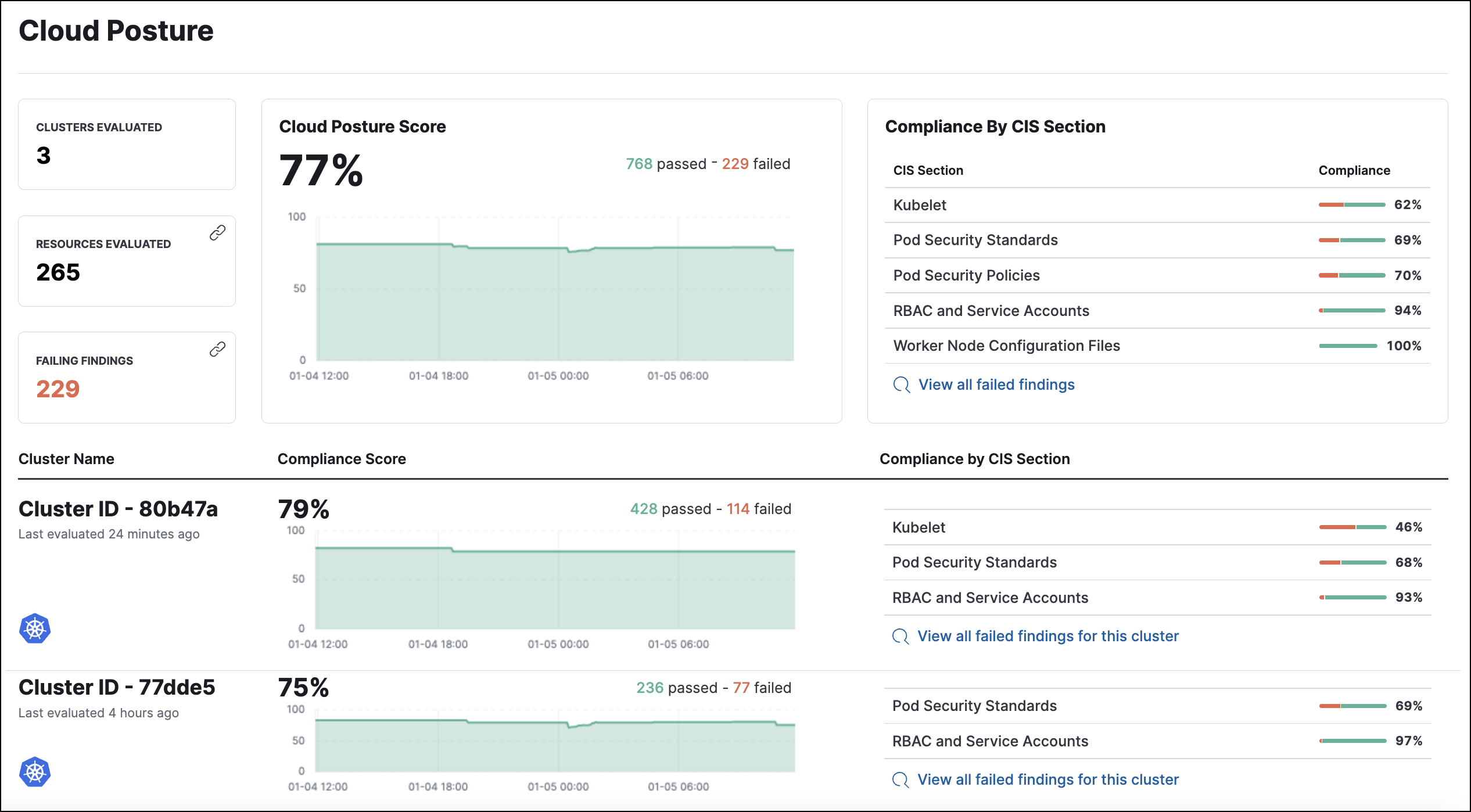Cloud Posture dashboard
editCloud Posture dashboard
editThe Cloud Posture dashboard summarizes your Kubernetes infrastructure’s overall performance against CIS security benchmarks. To learn how to collect this data from your clusters, refer to Get started with KSPM.

The Cloud Posture dashboard shows:
- Configuration risk metrics for all monitored clusters
- Configuration risk metrics for individual clusters
- Configuration risks grouped by CIS section
Cloud Posture dashboard UI
editThe top section of the dashboard summarizes your overall cloud security posture (CSP) by aggregating data from all monitored Kubernetes clusters. Three summary cards on the left of this section show Clusters Evaluated, Resources Evaluated, and Failed Findings. You can click Resources Evaluated or Failed Findings to open the Findings page grouped by resources or filtered for failed findings, respectively.
The remaining summary cards show your overall compliance score, and total failed findings grouped by CIS section. Click any CIS section name to view failed findings from that section on the Findings page.
Below the summary section, each row shows the CSP of a single Kubernetes cluster, including its name, when its posture was last evaluated, its compliance score, and failed findings grouped by CIS section. When you begin to monitor a new cluster, a new row appears.

FAQ (Frequently Asked Questions)
editWhen do newly-enrolled clusters appear on the dashboard?
It can take up to 10 minutes for deployment, resource fetching, evaluation, and data processing before a newly-enrolled cluster appears on the dashboard.
When do unenrolled clusters disappear from the dashboard?
A cluster will disappear as soon as the KSPM integration fetches data while that cluster is not enrolled. The fetch process repeats every four hours, which means a newly unenrolled cluster can take a maximum of four hours to disappear from the dashboard.